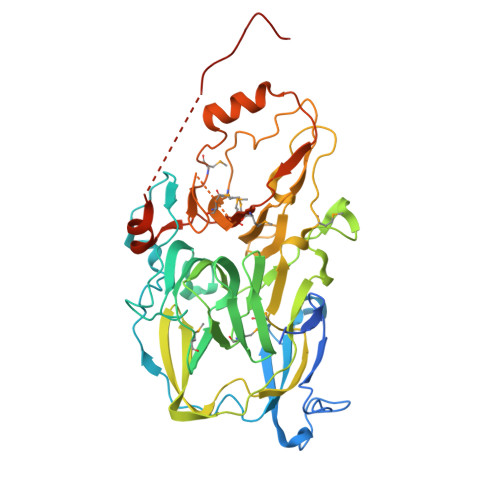Crystal structure of human homogentisate dioxygenase.
Titus, G.P., Mueller, H.A., Burgner, J., Rodriguez De Cordoba, S., Penalva, M.A., Timm, D.E.(2000) Nat Struct Biol 7: 542-546
- PubMed: 10876237
- DOI: https://doi.org/10.1038/76756
- Primary Citation of Related Structures:
1EY2, 1EYB - PubMed Abstract:
Homogentisate dioxygenase (HGO) cleaves the aromatic ring during the metabolic degradation of Phe and Tyr. HGO deficiency causes alkaptonuria (AKU), the first human disease shown to be inherited as a recessive Mendelian trait. Crystal structures of apo-HGO and HGO containing an iron ion have been determined at 1.9 and 2.3 A resolution, respectively. The HGO protomer, which contains a 280-residue N-terminal domain and a 140-residue C-terminal domain, associates as a hexamer arranged as a dimer of trimers. The active site iron ion is coordinated near the interface between subunits in the HGO trimer by a Glu and two His side chains. HGO represents a new structural class of dioxygenases. The largest group of AKU associated missense mutations affect residues located in regions of contact between subunits.
Organizational Affiliation:
Department of Biochemistry and Molecular Biology, Indiana University School of Medicine, 635 Barnhill Drive, Indianapolis, Indiana 46202, USA.



















